Indeed, CNC Milling plays a very significant role in the manufacturing industry. It uses computer-controlled machines that rotate on the computer demands and perform multi-point rotatory cutting operations. CNC Milling consists of highly advanced cutting tools and helps cut excessive material from the workpieces. So, in this article, we will specifically deal with CNC milling tools, machinery, and processes it involves. Besides this, we will deal with its use in diverse industries and its alternatives in the market.
How Would You Define CNC Milling?
Like other sheet metal fabrication, CNC milling is equally significant. As its name suggests, CNC means Computerized Numerical Control. So, it is a computerized process that controls all its cutting tools, i.e. rotatory multipoint cutting tools. These help in cutting the excessive material from the workpieces. Besides this, it helps design custom parts and products. These products have several applications in different industries. Moreover, CNC Milling is flexible and can use multiple materials.
What Is a CNC Milling Machine?
The machines that carry out CNC milling operations are CNC machines. These are cutting tools that are specifically used to cut the material from the metal. The traditional millings operate manually. While the CNC milling machines are computerized. They are more accurate and precise. Besides this, these machines control the designs and tool function with a computer. This is the reason, why CNC milling is now used in many industries to make custom parts.
What Does a CNC Milling Machine Do?
Because of computerized control, the CNC milling machines can perform different machining operations. They may include drilling, cutting, and shaping. Here the workpiece is attached to the stationary point. While the cutting tools are rotable. Then these cutting tools rotate around workpiece and the help get the required shape and size. So, these machines can operate in multi-directional axes, i.e. (X, Y, and Z). Additionally, if you deal with more advanced technologies. These CNC milling machines can rotate in five or more axes. This feature provides them flexibility in making custom-designed parts.
What is the Difference Between 3-axis, 4-axis, and 5-axis Milling Machines?
CNC milling machines can be classified based on the number of axes they operate along, and the more axes a machine has, the more complex and versatile it becomes in producing intricate parts. Below is a detailed explanation of the differences between 3-axis, 4-axis, and 5-axis milling machines:
1. 3-Axis Milling Machine
- A 3-axis CNC milling machine is the most common type used in manufacturing and operates along three linear axes: X, Y, and Z. In this setup, the workpiece is held in place while the cutting tool moves along these three axes to remove material from the surface.
- Advantages: 3-axis machines are straightforward to operate and program, and they are capable of producing parts with simpler geometries and precise cuts. They are highly cost-effective for basic milling operations, such as drilling holes, slots, and simple contours.
- Limitations: While 3-axis machines are efficient for basic tasks, they are limited when it comes to machining complex features like undercuts, intricate contours, or multi-angle cuts.
2. 4-Axis Milling Machine
- A 4-axis CNC milling machine extends the capabilities of a 3-axis machine by adding a fourth axis (usually the A-axis or rotation around the X-axis). This allows the workpiece to rotate as it is being machined, providing more flexibility to machine parts with features on multiple sides or angles.
- Advantages: 4-axis milling allows for more complex shapes, such as parts with holes, slots, or grooves on different sides. It reduces the need to reposition the workpiece manually, increasing both accuracy and efficiency.
- Limitations: 4-axis machines are more expensive than 3-axis machines, and they require more complex programming and setup. While they are more versatile than 3-axis machines, they still cannot handle very intricate geometries or multi-angle cuts.
3. 5-Axis Milling Machine
- A 5-axis CNC milling machine is the most advanced type of milling machine, capable of moving the cutting tool or workpiece along five axes: X, Y, Z, A, and B. These machines can rotate the workpiece in multiple directions, allowing for complex geometries, deep contours, and undercuts to be created without having to reposition the part.
- Advantages: 5-axis milling is ideal for highly intricate and complex parts, such as aerospace components, medical implants, and turbine blades. It allows for high-precision machining, greater flexibility, and the ability to cut complicated shapes in a single operation. Additionally, 5-axis machines improve surface finishes and reduce cycle times.
- Limitations: 5-axis machines are the most expensive and require highly skilled operators. The programming is more complex, and the setup time can be longer compared to 3-axis or 4-axis milling machines. However, their ability to produce high-precision parts makes them a valuable investment for industries requiring complex designs.
Step-by-step Complete Process of CNC Milling
So, here is the complete and step-by-step process of CNC milling.
1. Designing Part
CNC Milling starts with designing the metal part. It is generally designed using CAD software. Here, you include all the specifications, dimensions, and geometrical shapes and features in the design. Moreover, if you use advanced CAD software. They provide more precision to complex designs and ultimately create complex parts. So, here engineers must consider some factors. They may include, material properties, tool access, and machining constraints. This design is the first nut most critical part. As they guarantee that the final parts meet all the functional requirements.
2. Programming of CNC Machines
After designing the workpiece in CAD. The next step is importing it onto CAM software. It helps translate the CAD design into a sequence of instructions for the CNC machine. Then it generates code in numerical programming language. It tells the machines how to cut and move. Besides this, it also controls the speed of the machine and the path at which it will cut. Here it is important to optimize the cutting path. So, it can reduce the machining time and material waste. So, the programmers adjust the cutting parameters, i.e. spindle speed, feed rate, and depth of cut.
3. Setup of CNC Machines
At this step, the engineers prepare the CNC machines for operation. Here the workpiece material is appropriately clamped with the machine table. This table is stationary and avoids movement during the machining. So, it is important to maintain the part’s dimensions and integrity. Moreover, here optimal cutting tools are selected. Then they install it on the machine’s tool holder. After that, the engineer performs machine calibrations and sets them at zero points as a reference for all measurements. The operators check the safety protocols and also verify the CNC machine configuration.
4. Machining Phase
Here the CNC machines strictly follow the programming instructions of the platforms. To carry out this operation, the cutting tools start to rotate at a very high speed. Then they progressively remove the material from the workpiece. After that, the workpiece attains the specific shape and dimensions. So, these machines are rotated in multiple axes, i.e. X, Y, and Z). These machines also have two more dimensions to deal with complex parts.
5. Finishing of Workpiece
Once the material is cut down from the workpiece, it usually requires finishing. It is generally done to meet the final specifications and quality standards. This step may include deburring to cut the sharp edges. It also includes the burrs on the left from the cutting process. Moreover, it also includes polishing of the workpiece surface. It smoothens the part and increases the surface properties like corrosion resistance and hardness. The process included in finishing is anodizing, painting, or plating may also be applied.
What are the Different Types of CNC Milling?
CNC milling can be of different types. So, let’s discuss them in detail
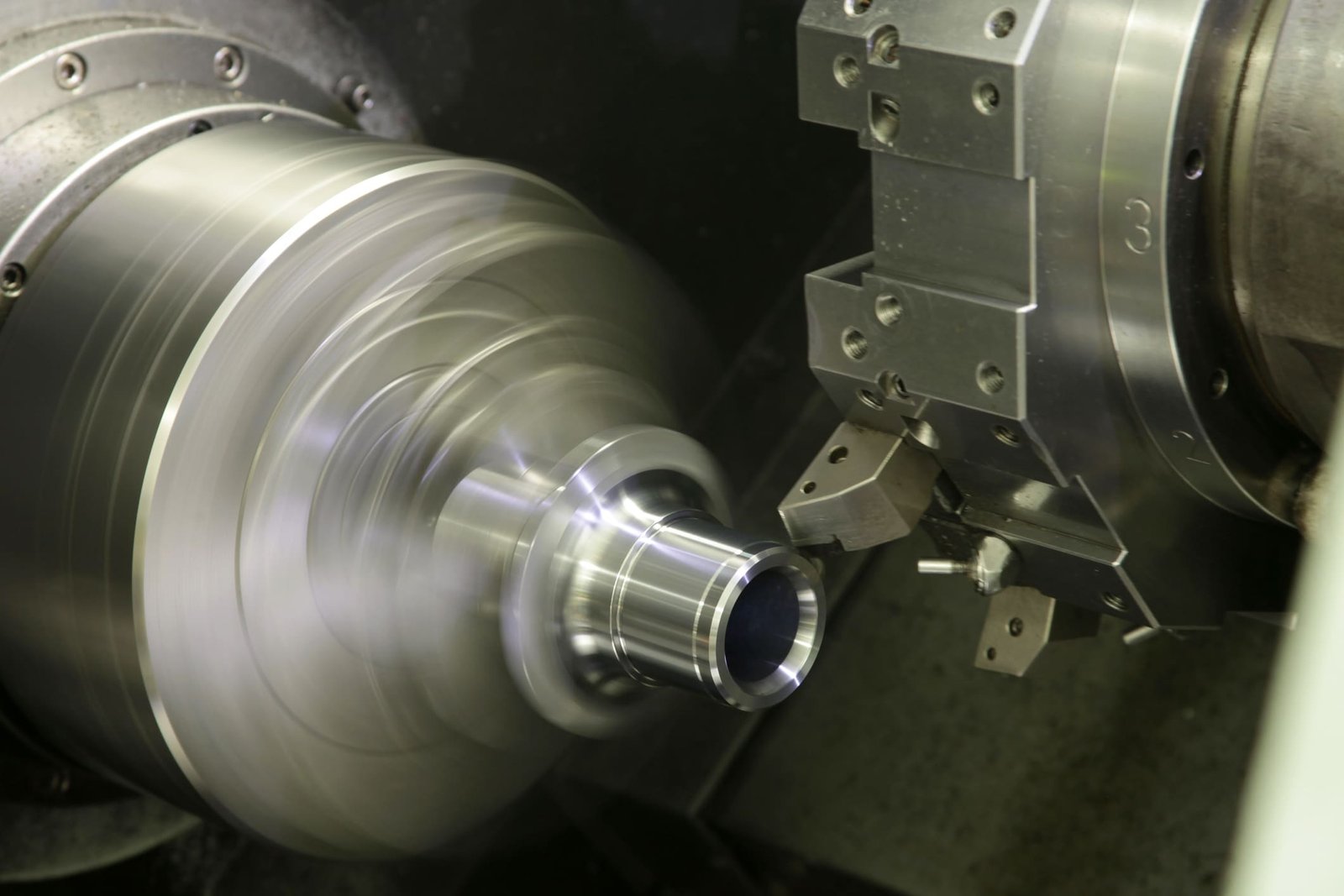
2. Face Milling
It cuts the flat surface perpendicular to the cutter axis. Here the cutter gas multiple cutting edges. These move around the workpiece and give it a smooth finish. It is usually done using vertical machines. So, they are widely used in making large surfaces. They may include a block or the face of a part.
It helps cut the different features at some angle to the vertical or horizontal plane of the workpiece. Here the cutter tilts at some angle. Its table is rotatory to give the precise settings. Angle milling is generally used in making common features, i.e. V-grooves, dovetail joints, and other angled features of interlocking parts or assemblies.
4. Form Milling
It uses shaped cutters and helps make complex contours and curves on a workpiece. This process is highly suitable for custom-designed parts. Hence, it contains both horizontal and vertical milling machines. So, it can cut the profiles, i.e. gears, cams, and intricate mold components. Moreover, it is widely used in industries for their custom suitability.
What Materials Are Used in CNC Milling?
Here are some commonly used materials by CNC milling. So, let’s discuss them here.
| Material Type | Specific Materials | Properties |
| Metals | Aluminum | Lightweight, machinable |
| Steel | Strong, durable | |
| Brass | Corrosion-resistant, conductive | |
| Copper | Excellent conductivity | |
| Titanium | High-strength, corrosion-resistant | |
| Plastics | ABS | Tough, impact-resistant |
| Polycarbonate | Impact-resistant, transparent | |
| Nylon | Wear-resistant, chemical-resistant | |
| Acrylic | Clear, weather-resistant | |
| Composites | Fiberglass | High strength-to-weight ratio, corrosion-resistant |
| Carbon Fiber Reinforced Polymers (CFRP) | Very high strength-to-weight ratio, stiff | |
| Wood | Hardwoods | Durable, aesthetic |
| Softwoods | Lightweight, easy to machine |
Types of CNC Milling Machines
Based on different shapes and applications. Multiple CNC milling machines are now available in the market. So, let’s discuss these machines in depth.
1. Horizontal Milling Machines
In such machines, the spindle is mounted horizontally but parallel to the worktable. This whole setup helps machines carry out milling operations by placing cutters on the horizontal arbor. So, these machines are highly compatible for dealing with heavy-duty and large-scale operations. Moreover, they provide stability and power for cutting hard materials. These machines have a high removal rate and can hold multiple tools. So, they are used in making cutting slots, gears, and complex shapes.
2. Vertical Milling Machines
Vertical milling machines mount the spindle vertically and rotate the cutting tool. Here the workpiece is placed on the horizontal that can move in various directions. Such machines are highly suitable for making detailed and precise parts. So, they have various applications in drilling, slotting, and cutting of small to medium-sized components. Besides this, they are a perfect fit for precision engineering, prototyping, and small-batch production.
3. 5-Axis Milling Machines
Such machines allow the movement of the cutting tools in five axes, simultaneously, i.e. (X, Y, Z, A, and B). So, they can make complex parts easily. This is the reason, they have more flexibility and can create multiple shapes in only one setup. These 5-axis machines are now used in different applications, i.e. aerospace, automotive, medical, and mold-making industries for making turbine blades, orthopedic implants, and intricate molds.
4. Bed Milling Machines
Here the spindle is mounted on a rotatory arbor and allowed to rotate. While the worktable is stationary. They are widely used in making large and heavy workpieces. They can tackle with parts that need stable support and minimal vibrations. So, these machines are stable and commonly used in making parts, such as shipbuilding, construction, and making of engine blocks, structural frames, and large molds.
Applications of CNC Milling
Here are the various applications of the CNC Milling process. Let’s discuss them in detail.
- Aerospace: This is widely used in making precision components for aircraft and spacecraft.
- Automotive: CNC milling helps make engine parts and transmission components.
- Medical: In the medical sector, CNC milling helps make Surgical instruments and implants.
- Electronics: It is used to make Housings and enclosures.
- Manufacturing: CNC milling is also suitable for making Prototypes and custom parts.
Benefits and Limitations of CNC Milling
Here are certain benefits and drawbacks of CNC Milling Machines.
| Aspect | Benefits | Limitations |
| Precision | High accuracy and repeatability | Requires proper calibration and maintenance |
| Versatility | Produces complex shapes and intricate details | Advanced programming skills needed |
| Efficiency | Faster production, less manual labor | High initial setup time |
| Consistency | Identical parts in large quantities | Risk of large batches of defects if errors occur |
| Flexibility | Easily reprogrammable for different parts | Skilled operators and programmers required |
| Material Range | Machines with a variety of materials | Specialized tools needed for very hard materials |
| Labor Costs | Reduced need for manual labor | High initial and maintenance costs |
| Safety | Reduced risk of manual accidents | Requires strict safety protocols |
| Scalability | Suitable for low and high-volume production | High-volume needs multiple machines and space |
| Quality Control | Advanced monitoring for quality | Regular maintenance needed |
| Complex Geometries | Produces intricate parts with tight tolerances | Longer machining times for complex parts |
| Waste Reduction | Precise cutting reduces material waste | Some material waste is still present in subtractive processes |
What Can Go Wrong?
While CNC milling offers many benefits, there are several factors that can go wrong during the milling process. These issues can lead to defects in the final part, increased costs, and delays in production. Below are some of the common problems that may occur during CNC milling operations:
1. Machine Setup Errors
- Incorrect setup of the CNC machine is one of the most common sources of problems. This can include improper alignment of the workpiece, incorrect tool selection, or failure to properly calibrate the machine. Such errors can lead to poor machining results, such as inaccurate dimensions, tool wear, or even damage to the machine.
- To avoid this, it is essential to have a well-trained operator who can carefully set up and verify the machine before starting the milling process.
2. Material Issues
- The quality of the material being milled can also affect the final outcome. Materials that are not uniform or have defects, such as cracks or inclusions, can cause issues during machining. These defects can lead to parts that are weaker, have poor surface finishes, or are not within specification.
- Using high-quality materials and performing a thorough inspection before milling can help minimize these issues.
3. Tool Wear and Damage
- CNC milling involves the use of cutting tools that can wear out over time due to continuous contact with the workpiece. If the tools are not replaced or maintained regularly, it can result in poor surface finishes, dimensional inaccuracies, and increased tool wear. This, in turn, can lead to higher production costs and delays.
- Regular maintenance, tool inspection, and proper tool selection based on the material being machined can help extend tool life and maintain machining quality.
4. Programming Errors
- CNC milling relies on precise programming to execute the desired operations. If there is a mistake in the programming, such as incorrect G-code instructions or inaccurate coordinates, it can result in parts that do not meet specifications. This could include parts that are too large, too small, or with features in the wrong locations.
- Thoroughly checking the programming and running simulation tests before actual milling can help identify potential issues before they affect production.
5. Overheating
- CNC milling machines operate at high speeds, generating significant heat during the machining process. If the machine is not properly cooled, it can cause overheating, leading to thermal expansion and dimensional inaccuracies. Overheating can also accelerate tool wear and damage the material.
- Using coolant during the milling process, ensuring proper ventilation, and monitoring the machine’s temperature can help avoid overheating issues.
6. Poor Surface Finish
- A poor surface finish can occur if the cutting tools are not sharp enough, if the machining speed is too high or too low, or if the material is not properly supported during milling. This can result in rough, uneven surfaces or excessive burrs that need additional finishing work.
- To avoid poor surface finishes, it’s essential to select the right cutting parameters, use appropriate tools, and ensure the workpiece is securely fastened.
7. Tooling and Fixture Problems
- The tools and fixtures used to hold the workpiece in place during CNC milling can also lead to problems. If the workpiece is not securely clamped, it may shift during the machining process, resulting in parts with inconsistent dimensions. Similarly, incorrect or worn-out tooling can lead to poor cuts and excessive tool wear.
- Ensuring proper fixture design and using the right tools for each job can help minimize these issues.
Alternative Processes for Milling Operations
While CNC milling is one of the most popular methods for machining parts, there are several alternative processes that can be used depending on the specific requirements of the part and the material. These alternative processes are often chosen for their unique advantages in certain applications:
1. CNC Turning
CNC turning is used to create cylindrical or conical parts by rotating the workpiece against a stationary cutting tool. It is ideal for parts that have rotational symmetry, such as shafts, bolts, and fittings. CNC turning is typically faster than CNC milling and is particularly efficient for high-volume production of round parts.
2. Laser Cutting
Laser cutting uses a focused laser beam to cut through materials with high precision. It is especially useful for cutting thin materials like sheet metal, plastics, and wood. Laser cutting provides high-quality edges and is highly efficient for both simple and complex geometries, but it is generally limited to thinner materials compared to CNC milling.
3. Waterjet Cutting
Waterjet cutting uses a high-pressure stream of water (often mixed with abrasive particles) to cut through materials. It is ideal for materials that cannot withstand the heat generated by laser or plasma cutting, such as composites, ceramics, and sensitive metals. Waterjet cutting offers high precision and can be used on a wide variety of materials, including metals, plastics, and stone.
4. Electrical Discharge Machining (EDM)
EDM is a precision machining process that uses electrical discharges (sparks) to remove material from the workpiece. This process is ideal for creating intricate shapes and fine details in hard or tough materials such as tool steels and carbide. EDM is widely used for creating molds, dies, and parts with complex geometries that are difficult to achieve through traditional machining methods.
5. 3D Printing (Additive Manufacturing)
3D printing, or additive manufacturing, is a process that builds parts layer by layer using materials such as plastic, metal, or ceramics. It is particularly advantageous for producing prototypes, low-volume parts, and parts with complex geometries that would be difficult or impossible to machine using CNC milling. 3D printing is also more cost-effective for small production runs and reduces material waste compared to subtractive processes.
6. Stamping and Punching
Stamping and punching are processes where a die is used to cut, shape, or form materials. These processes are most commonly used for sheet metal and are efficient for producing high volumes of parts. Stamping and punching are generally quicker and more cost-effective than CNC milling when dealing with thin materials and simple shapes.
7. Casting
Casting involves pouring liquid material (usually metal or plastic) into a mold to create a part. This process is often used for producing parts with complex shapes that are difficult to machine. Casting can be a cost-effective alternative to CNC milling for high-volume production, especially for parts made from materials like aluminum, iron, or bronze.
CNC Milling VS CNC Turning
While both CNC milling and CNC turning are subtractive manufacturing processes that involve the removal of material from a workpiece to create a finished part, they are different in their operation and suitable applications. Here’s a comparison of both methods:
1. CNC Milling
- Process: CNC milling involves using a rotating cutting tool that moves along multiple axes to remove material from a stationary workpiece. The machine tool is moved in various directions (usually 3, 4, or 5 axes) to shape the part. CNC milling is highly versatile and can be used to produce a wide variety of shapes, including flat surfaces, contours, holes, and complex 3D shapes.
- Applications: CNC milling is used for making parts with irregular shapes, complex geometries, and parts that require multiple features or deep pockets. It is suitable for producing components with complex contours, faces, holes, or 3D features, such as in industries like aerospace, automotive, and medical devices.
- Advantages:
- Ability to create complex shapes and 3D features.
- Versatility to work with a wide range of materials (metals, plastics, composites).
- Can be used for both prototype and high-volume production.
- Limitations:
- Relatively slower than turning when machining cylindrical parts.
- May require more complex setups for certain geometries.
2. CNC Turning
- Process: CNC turning involves rotating a workpiece while a stationary cutting tool removes material from it. The workpiece is held in a chuck or fixture and rotated along its axis, with the cutting tool moving along the X and Z axes to shape the part. CNC turning is commonly used to produce cylindrical, conical, or spherical parts with rotational symmetry.
- Applications: CNC turning is ideal for creating round, cylindrical, or symmetrical parts, such as shafts, bushings, and threaded components. It is typically used for parts with a high degree of rotational symmetry or simple geometries, often seen in industries like automotive, machining, and electronics.
- Advantages:
- Highly efficient for creating cylindrical parts.
- Faster material removal for round parts compared to milling.
- Can produce parts with high precision and smooth finishes.
- Limitations:
- Limited to parts with rotational symmetry.
- Less flexibility in creating complex 3D shapes or irregular features.
Summary of Differences
| Feature | CNC Milling | CNC Turning |
| Movement | Rotary cutter moves on multiple axes (X, Y, Z, A, B) | Workpiece rotates; cutter moves along X and Z axes |
| Applications | Complex shapes, 3D features, flat or contoured surfaces | Round, cylindrical, or symmetrical parts |
| Speed | Slower for cylindrical parts | Faster for round parts |
| Flexibility | High; can create complex 3D parts | Limited to rotationally symmetrical parts |
| Common Materials | Metals, plastics, composites | Metals, plastics |
How Much Does CNC Milling Cost?
Different industries offer different prices. But here are some estimated costs that can help you understand the budgeting options available in the market.
| Cost Factor | Description | Typical Range |
| Machine Time | Hourly rate for using the CNC machine | $50 – $200 per hour |
| Setup Costs | Initial setup and calibration of the machine | $100 – $500 per setup |
| Tooling Costs | Cost of cutting tools and fixtures | $20 – $100+ per tool |
| Material Costs | Cost of raw materials | Varies widely based on material |
| Programming Costs | Cost for creating CNC programs (G-code) | $50 – $100 per hour |
| Finishing Costs | Additional processes like deburring, coating | $10 – $50 per part |
The Future of CNC Milling
1. Automation and Robotics
Automation in CNC milling is expanding beyond traditional machine operation. Robotic arms and automated tool changers are being integrated into CNC systems, allowing for fully automated production lines that operate 24/7. This reduces labor costs, speeds up production, and increases accuracy, especially in high-volume manufacturing. Robots are also being used for part handling and quality inspection, further enhancing workflow efficiency.
2. 3D Printing and Hybrid Manufacturing
The combination of CNC milling and 3D printing is emerging as a hybrid manufacturing solution. This hybrid process allows manufacturers to use 3D printing for additive features (such as complex internal structures) and CNC milling for subtractive machining of precise external features. This approach not only reduces material waste but also improves the flexibility and complexity of the parts that can be produced.
3. Cloud-Based CNC Milling
Cloud-based CNC milling is revolutionizing the industry by allowing manufacturers to control CNC machines remotely via cloud-connected software. This enables real-time monitoring, diagnostics, and software updates from any location. Cloud platforms also facilitate collaboration among engineers and designers, improving the design-to-production workflow. Furthermore, cloud-based systems enable better data storage and analysis, enhancing process optimization and decision-making.
4. Sustainability and Energy Efficiency
As industries focus more on sustainability, future CNC milling machines are being designed to be more energy-efficient and environmentally friendly. Innovations include improved cooling systems, recyclable materials, and energy-saving features that minimize power consumption. Additionally, reducing material waste through precision machining and better tool-life management will help companies meet sustainability goals.
5. Increased Precision and Micro-Manufacturing
As industries demand higher precision and micro-manufacturing capabilities, CNC milling is evolving to meet these needs. The use of micro-machining technologies will allow for the production of extremely small and detailed components, such as those used in electronics, medical devices, and aerospace applications. These innovations will enable the creation of parts with tolerances measured in microns, achieving unprecedented levels of precision.
What Should Be Considered When Choosing CNC Milling Manufacturer?
When selecting a CNC milling manufacturer, several important factors should be taken into account to ensure that the manufacturer meets your specific needs and requirements. Below are key considerations to help guide your decision:
-
Experience and Expertise
The manufacturer’s experience and expertise in CNC milling are critical. It’s important to choose a manufacturer with a proven track record in producing the types of parts you need. Ensure that they have experience in the specific industries or materials relevant to your project, whether it’s aerospace, automotive, medical, or another sector. Their understanding of material properties and machining techniques will impact the quality and precision of the parts they produce.
-
Technology and Equipment
A top CNC milling manufacturer should have access to the latest CNC machines and cutting-edge technology. The capabilities of the machines, such as the number of axes (3-axis, 4-axis, or 5-axis), and the type of tooling they use will influence the complexity and precision of the parts produced. Make sure the manufacturer uses advanced machinery that can handle the specific requirements of your project, especially if you need high precision or work with complex geometries.
-
Quality Control and Precision
Quality control is essential in CNC milling. The manufacturer should have strict quality assurance processes in place to ensure that every part produced meets your specifications. This includes using calibrated measuring instruments, inspection at various stages of production, and adhering to industry standards. Be sure to inquire about the manufacturer’s tolerance levels and their ability to meet your desired precision.
-
Turnaround Time
Timeliness is a critical factor in many industries. Discuss with the manufacturer their lead times for CNC milling projects, and ensure they can meet your production deadlines. A reliable manufacturer should provide you with accurate delivery schedules and be transparent about their capacity to handle urgent orders if needed.
-
Customization and Flexibility
Your project may require customized solutions, so it’s essential to choose a manufacturer that offers flexibility in their services. This could include the ability to work with a range of materials, offer prototype development, or accommodate changes to designs. A good CNC milling manufacturer should be able to adapt to your specific needs and help optimize designs for manufacturability.
-
Cost and Pricing Structure
The cost of CNC milling varies depending on factors like material, complexity, and quantity. It’s important to get a clear understanding of the manufacturer’s pricing structure. Ask for detailed quotes and consider whether the price is justified by the quality and service offered. Compare prices from multiple manufacturers, but don’t make cost the only deciding factor. Sometimes, higher upfront costs can lead to better long-term results and savings due to improved quality and faster production times.
-
Customer Support and Communication
Effective communication and customer support are vital throughout the CNC milling process. The manufacturer should provide clear and timely communication, keeping you updated on the progress of your project. They should also be responsive to your inquiries and offer support if any issues arise during the production process.
Why Choose TOPS for CNC Milling?
TOPS is a premier industry, offering different types of Milling operations. Our facility is equipped with different CNC milling machines. We can carry out various milling operations in less time. Besides this, we have an expert staff and engineers that help us manufacture high-precision and accurate parts in bulk quantities. So, if you are looking for expert CNC milling services. We’re here to serve you in all possible ways. Get your quote today.
Conclusion
In conclusion, CNC milling is a unique and precise way to make different workpieces. It helps remove the excessive material attached to the metal part and gives a smooth finish. Besides this, it is an important process for various industries, i.e. automotive, aerospace, construction, and electronics. So, CNC milling is capable and beneficial for making prototypes and large-volume productions.
Frequently Asked Questions
Q1. How Would you Differentiate Between CNC Milling and CNC Turning?
Although both process helps cut the excessive material. But they have different setups. CNC milling has rotatory cutting tools that cut the material. CNC turning has stationary cutting tools and they cut the rotatory workpiece using a lathe.
Q2. What Materials Do CNC Milling Machines Support?
These machines can work with different materials, i.e. metals, plastics, composites, and wood.
Q3. How Accurate are CNC Milling Machines?
These machines are quite precise and accurate. They can achieve precision within micrometers. So, it depends on the machine’s capabilities and the material you use.
Q4. What is the difference between guideways and slideways?
The main differences between guideways and slideways lie in precision, structural complexity, application areas, and load-bearing capacity. Guideways are better suited for high-precision, high-load applications and are commonly found in advanced CNC machines, while slideways are used in simpler, lighter-duty applications where cost is a key factor.
Q5. Is there a lot of math in CNC machining?
Yes, there is a fair amount of math involved in CNC (Computer Numerical Control) machining. While the CNC machine itself is controlled by software that automates many aspects of the machining process, understanding and applying math is essential for various stages of CNC machining, such as design, programming, setup, and troubleshooting.
Q6. How hard is it to learn CNC milling?
Learning CNC milling can vary in difficulty depending on your prior knowledge and the depth of expertise you want to achieve. However, like many technical skills, with the right resources and practice, CNC milling can be learned step by step.

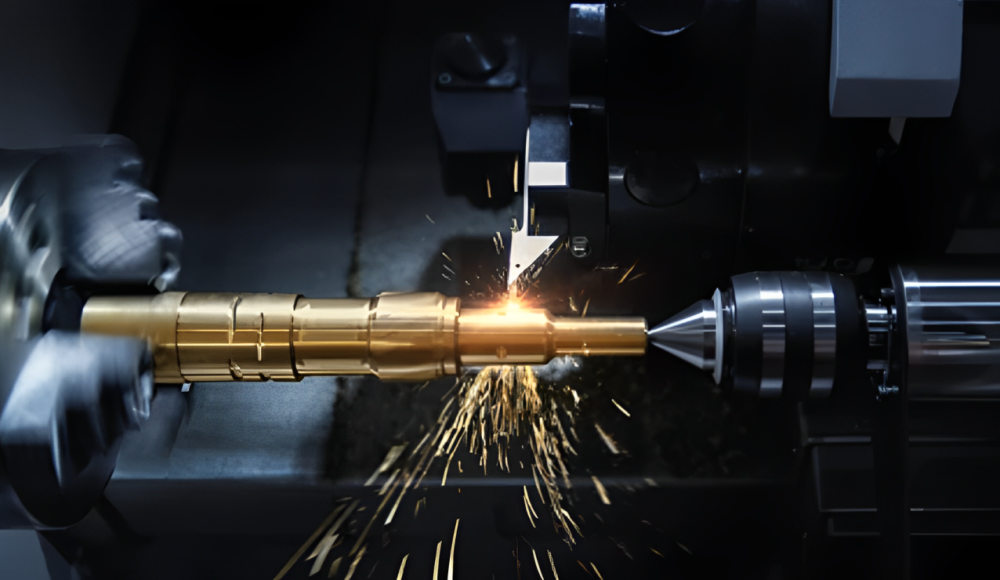
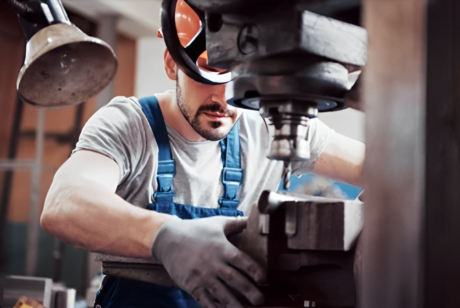


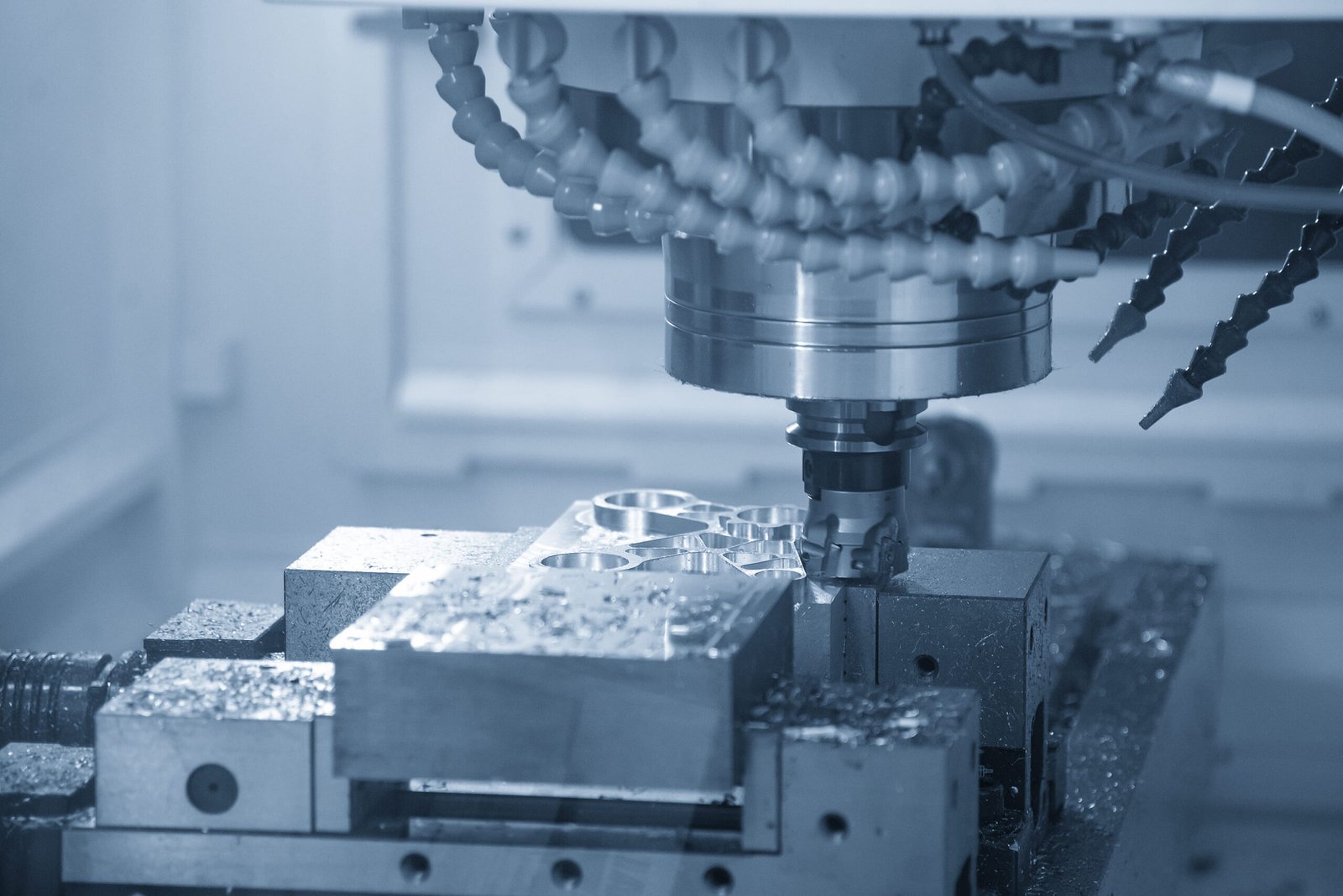
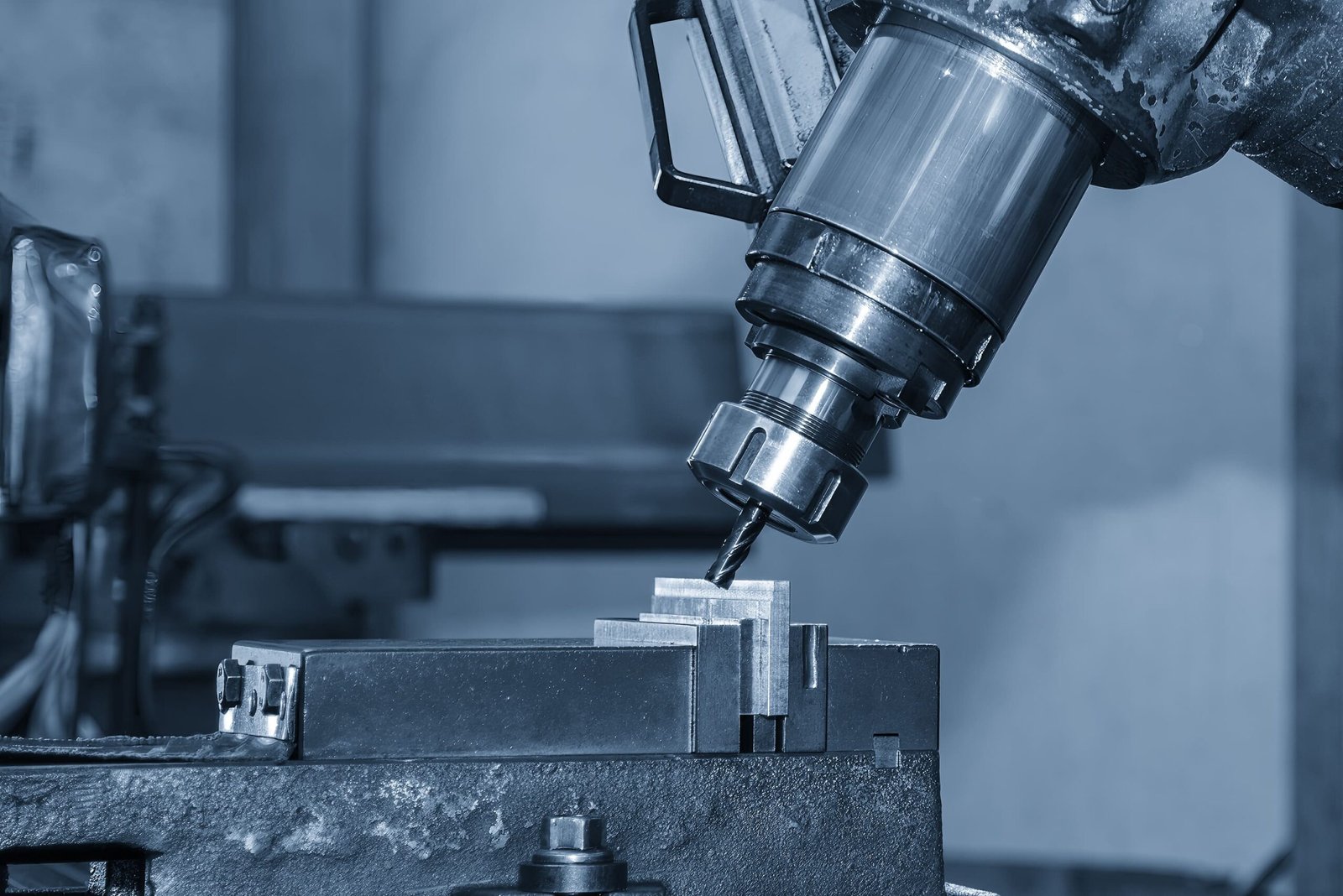
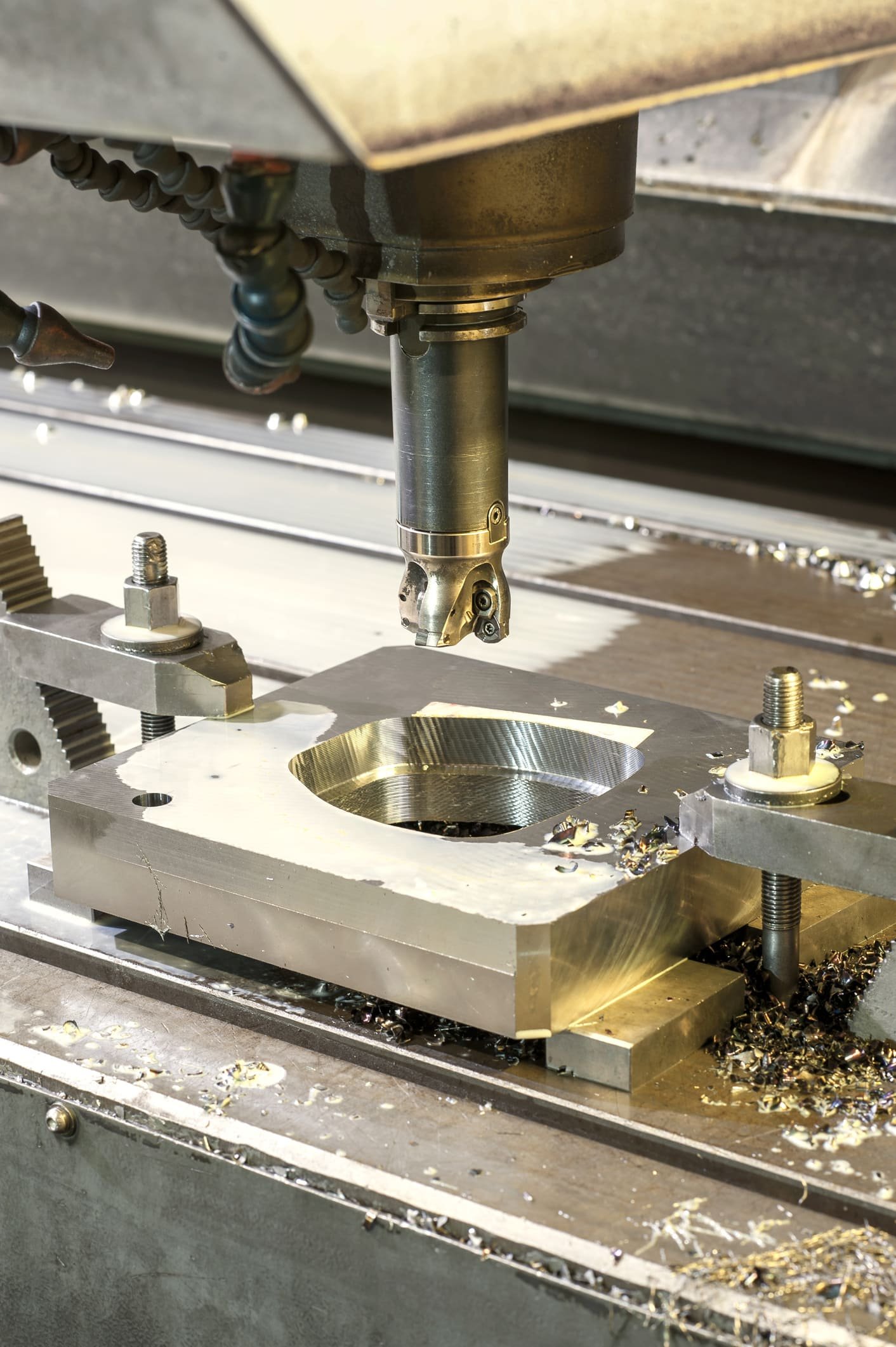
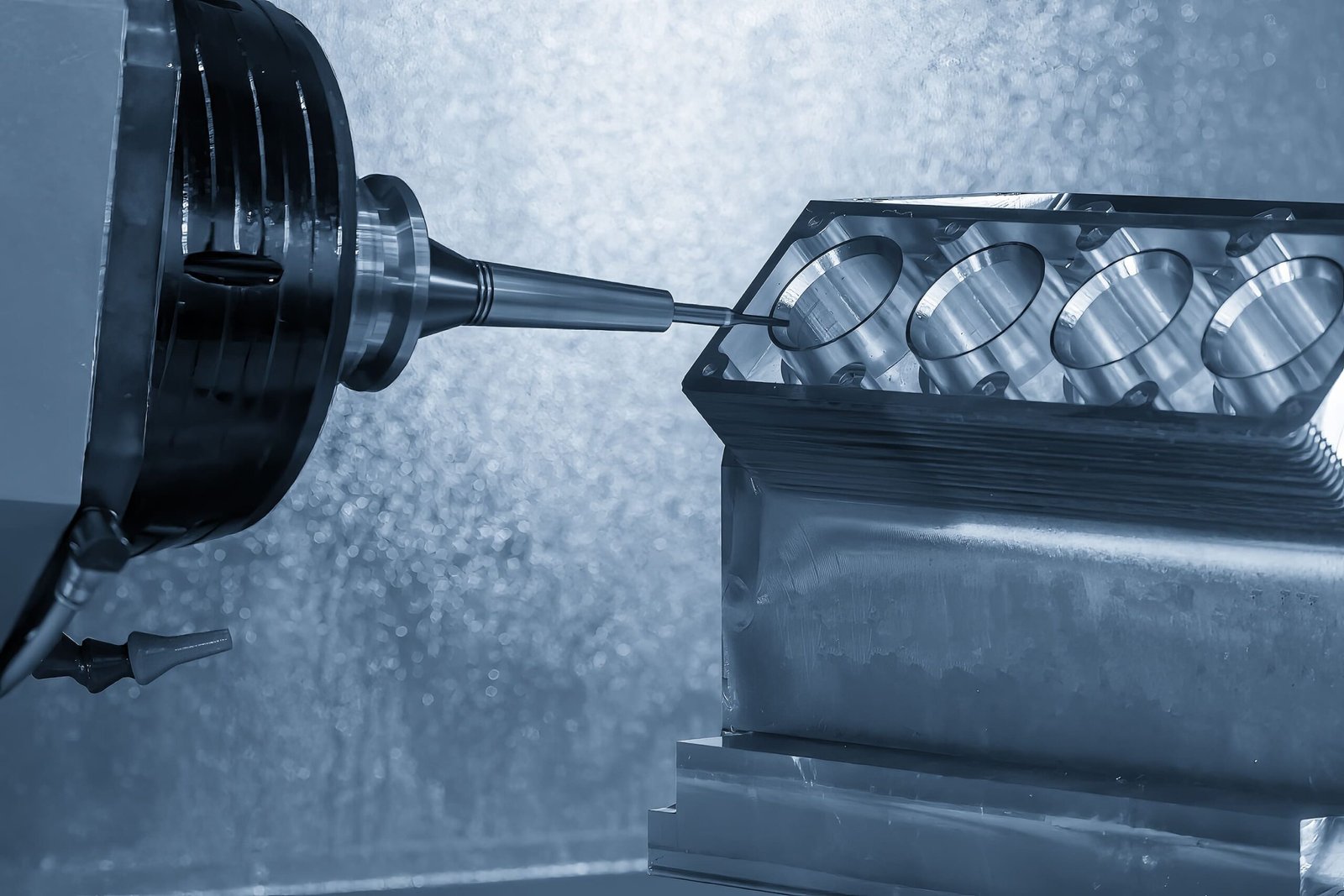
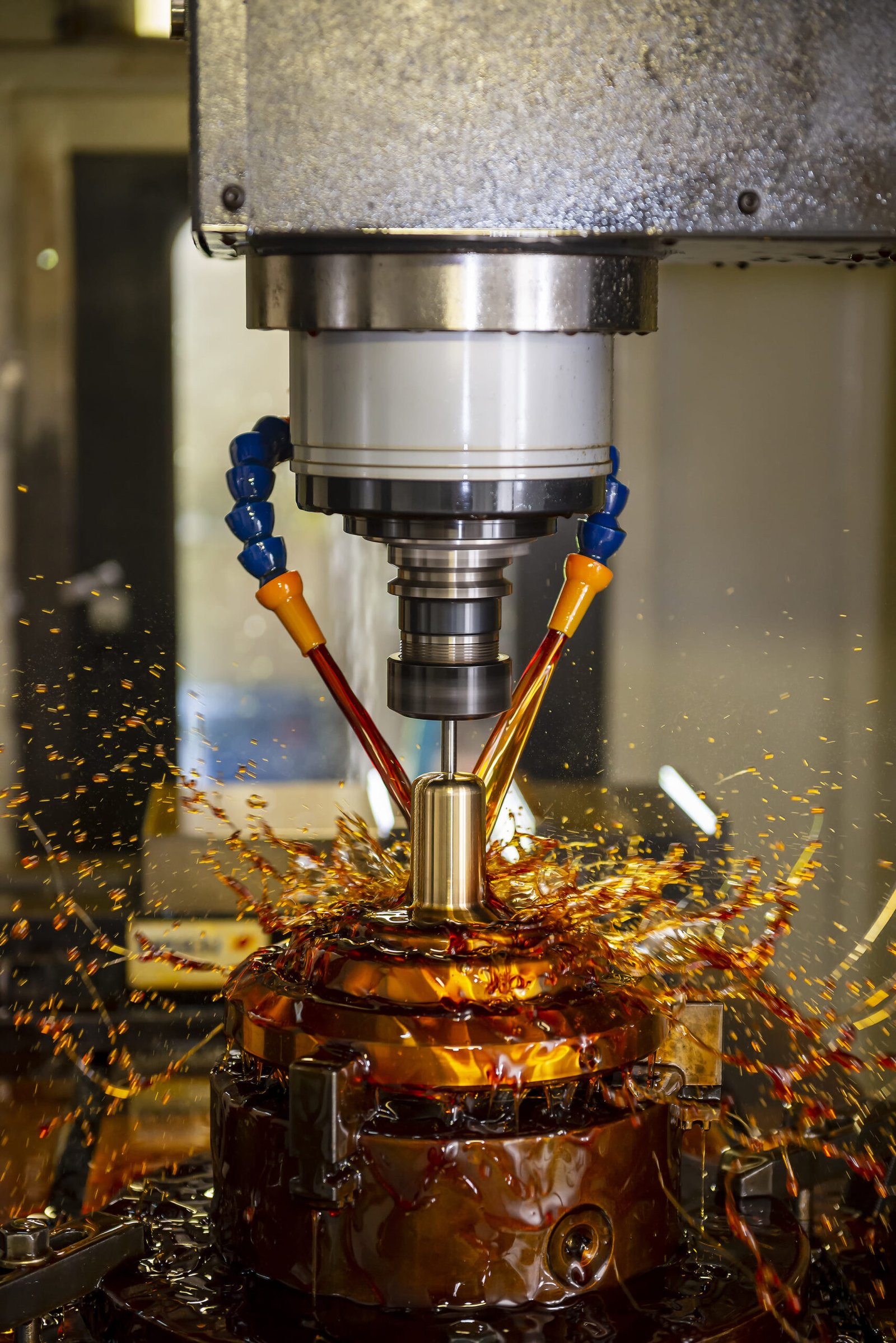


16 thoughts on “What is CNC Milling | The Ultimate Guide of CNC Milling”